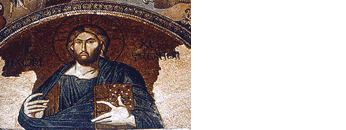 |
 |
- Fragments of the Gospel Found at Qumran
-
- Some Greek fragments found in Cave 7 at Qumran may contain excerpts from Markís gospel and other New Testament passages.
|
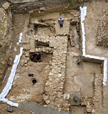 |
- First-century Houses in Nazareth
-
- The village of Nazareth where Jesus grew up is covered by many subsequent layers of occupation. Little has been excavated, still less has been found, from the period when Jesus lived. Excavators have recently found two homes that legitimately date to that period; could one of these be the house of Jesus himself?
|
 |
- The Pilate Inscription
-
- An inscription from Caesarea Maritima mentioning the Prefect of Judea and Samaria responsible for executing Jesus by crucifixion.
|
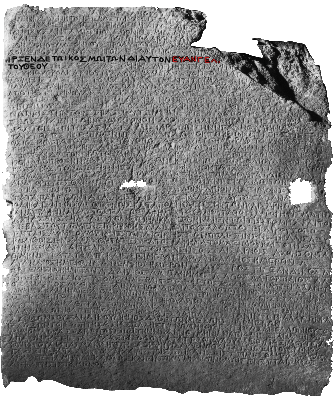 |
- The Priene Calendar Inscription
-
- These two tablets announce the intention of the city of Priene in western Turkey to change their calendar so that it begins on the birthday of the Roman Emperor Augustus in September. Near the top of tablet 2, they acknowledge Augustus as son of God whose birth marks the beginning of "good tidings" (ΕΥΑΝΓΕΛΙΟΝ) for the world. It was cut in 9 BCE, a few years before Jesus' birth.
|
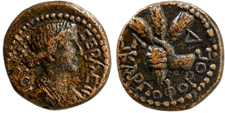 |
- The Imperial Cult at Sebaste & Caesarea Philippi
-
- Jewish client kings showed their loyalty to Rome by building temples and whole cities in the emperor's honor, by minting coins honoring the munificence of the imperial family, and by conducting rituals performing their reverence for the emperor during festivals, games and public spectacles.
|
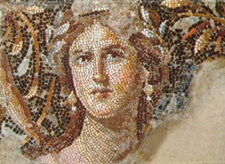 |
- The Art of Sepphoris
-
- Cities built by Jewish client kings also became the preferred home of the local elite, who built beautiful homes decorated with mosaic floors and frescoed walls. Their lifestyle was a far cry from that of the average village dweller.
|
 |
- Sites associated with John the Baptist
-
- Several locations claim to be the site of Johnís baptism in the Jordan, from the southern tip of the Sea of Galilee to a cave near Jerusalem.
|
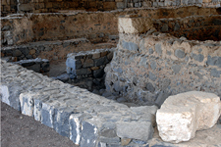 |
- Simon Peter's House
-
- A simple, basalt-walled building from the first-century village of Capernaum. Built like the homes of the village, but with the unusual feature of plaster-coated interior walls covered with graffiti from Christian pilgrims mentioning Peter's name and offering prayers.
|
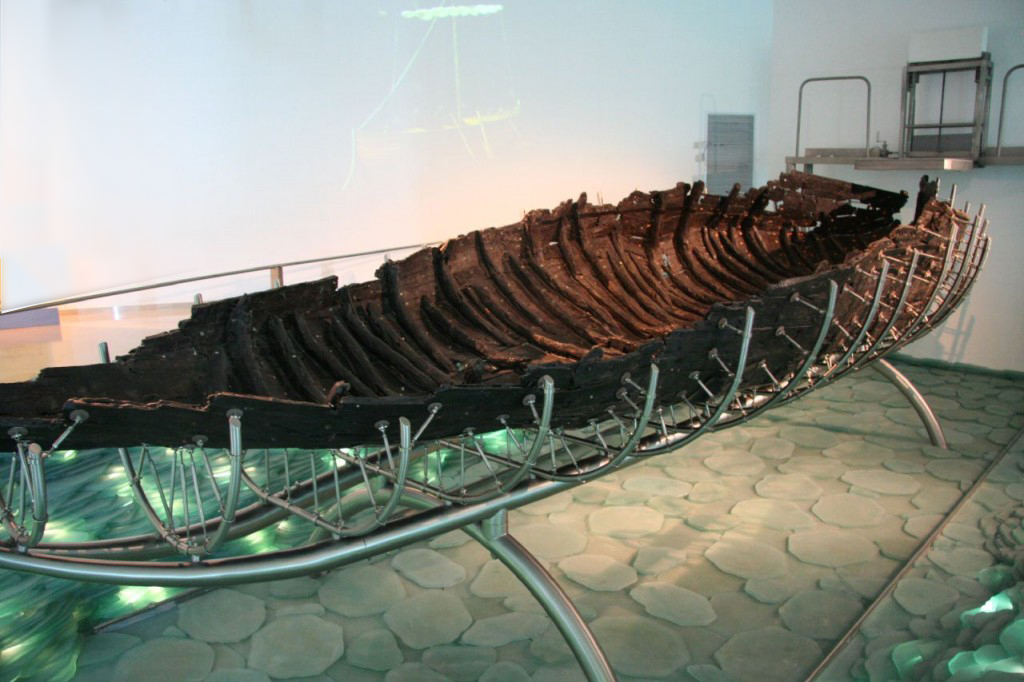 |
- The Galilee Boat
-
- This first-century CE fishing boat was found in the mud of the Sea of Galilee near Tiberias in 1986. Remarkably well-preserved, it reveals a lot a major industry that occupied villagers along the coast of the Sea of Galilee.
|
 |
- Reliquary of Philip, Andrew and Peter
-
- In 2018, Dr. Mordechai Aviam found this basalt box with three depressions near what he contends was the site of the "Church of the Apostles" in Bethsaida. Could it have housed the relics of the three apostles from Bethsaida?
|
 |
- The Gospel of Jesus' Wife
-
- A small Coptic papyrus that refers to Mary Magdalene as Jesus' wife. Is it authentic?
|
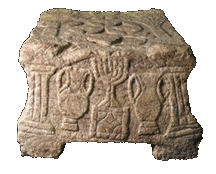 |
- The Magdala Stone
-
- A stone table, perhaps for the Torah scroll, found in a first-century synagogue in the Galilean fishing village of Magdala. This stone, with its detailed images of the Jerusalem Temple, changes our ideas about the relationship of Galilee to the Temple city.
|
 |
- The Mandylion of Edessa & the Letter of Abgar
-
- An image of the face of Jesus that reportedly healed the sick king Abgar when he sent a plea for help to Jesus.
|
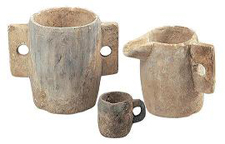 |
- Stone Vessels & Ritual Baths
-
- Whether Galilee was culturally more Jewish or Greek (and therefore, whether Jesus was) hinges on whether items associated with Jewish religion and culture are found in first-century CE Galilean sites.
|
 |
- Temple Mount
-
- The great platform expanded by Herod the Great, where Jesus and his contemporaries worshipped.
|
 |
- Family Tomb of Simon of Cyrene
-
- A family tomb discovered in the Kidron Valley in Jerusalem with contained an ossuary inscribed with the name of "Alexander, son of Simon," and an indication that the family was from "Cyrene." Could this be the son of Simon of Cyrene, whom Mark mentions as someone pressed into service to help carry Jesus' cross on his way to crucifixion (Mark 15:21)?
|
 |
- The Veronica (or Sudarium)
-
- The "true image" (vera + icon) of Jesus' face, from a cloth used to wipe his face during his march to crucifixion.
|
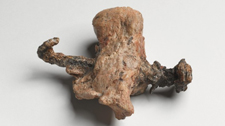 |
- The Crucified Man
-
- An ossuary found near Jerusalem contained the bones of two men and a young child. The ankle bone of one of the men still had the spike from his crucifixion in it. It is the only evidence found to date of a crucified person from anywhere in the ancient world.
|
 |
- Fragments of the True Cross
-
- Pieces of the wood from the cross of Jesus, first recovered by Constantineís mother Helena and now scattered across Europe and Asia.
|
 |
- Shroud of a Leper
-
- A first-century CE Roman tomb in Jerusalem was raided by grave robbers, but they didn't open a sealed chamber containing a body still wrapped in a linen shroud. DNA analysis of the bones showed leprosy and tuberculosis, and the weave pattern was quite different from the Shroud of Turin.
|
 |
- The Shroud of Turin
-
- The burial shroud of someone whose impression remains on the cloth and who appears to have been crucified. Is it Jesus?
|
 |
- The Talpiot Tomb
-
- Some say the Talpiot tomb in Jerusalem housed the remains of Jesusí family and some followers—and maybe the remains of Jesus himself (which would challenge the Christian teaching of his resurrection).
|
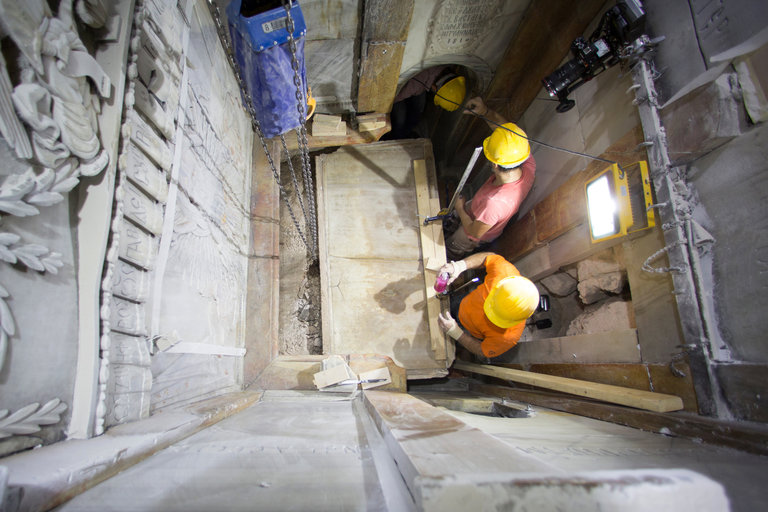 |
- The Church of the Holy Sepulchre
-
- The Church of the Holy Sepulchre contains the site of identified with Jesusí crucifixion and burial from at least the second century CE. In 2016, repairs to the aedicule housing the tomb revealed the burial slab for the first time in 500 years.
|
 |
- The Nazareth Inscription
-
- A Roman prohibition of removing remains from tombs; a response to Christian claims of the resurrection?
|
 |
- The Caiaphas Ossuary
-
- The bone box of Joseph Caiaphas, High Priest whom the gospels claim arranged for Jesus' execution by Rome.
|
 |
- Herod the Great's Tomb
-
- Not much remains of Herodís tomb along the circular staircase up the conical mountain fortress of Herodion, vandalized during the First Jewish Revolt. Was Herod buried here?
|
 |
- The Ossuary of James, brother of Jesus
-
- A bone box with the name of "James, son of Joseph, brother of Jesus" inscribed on the side. Could this be the James, the brother of the Jesus?
|
 |
- The Jesus Tablets
-
- 70 or so lead books, each the size of a credit card, inscribed with Hebrew writing in a kind of code and with what appear to be Christian symbols. Are these the earliest Christian books?
|
 |
- The Cave of the 70
-
- The gathering place of the 70 followers expelled from Jerusalem soon after Jesus death (Acts 8:1-3)?
|
 |
- The Nefesh Stone
-
- This stone, found in the debris of a Galilean village destroyed by the Romans during the First Jewish Revolt, bears a doomed resident's final sketch of his pending death.
|
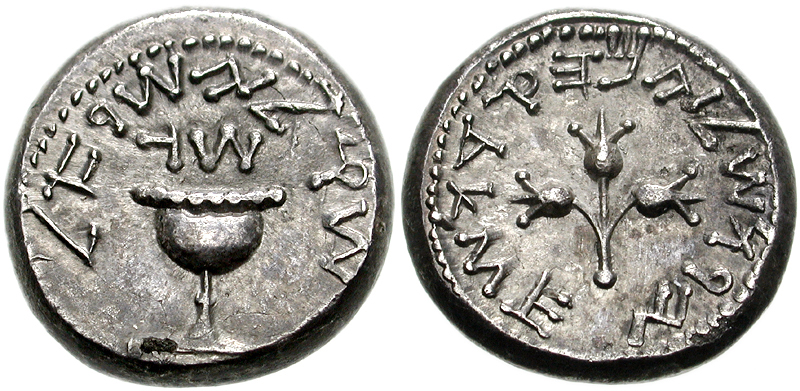
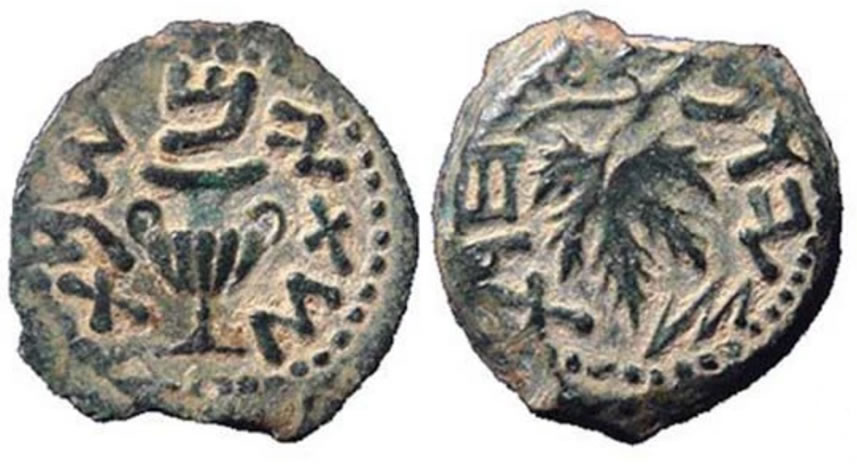 |
- Coins of the First Jewish Revolt
-
- The Jews who rebelled against Rome didn't wait for victory to seize their government. They captured Jerusalem immediately, burned down the archives to destroy any record of debts, and began to mint their own coins with symbols of their kingdom and hopes.
|
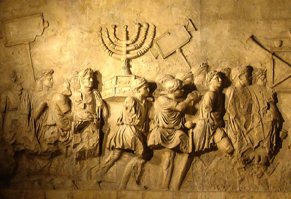 |
- Weapons & Art of the Jewish Revolt
-
- The victorious Roman general of the First Jewish Revolt (66-74 CE) celebrated his victory and the imperial ascent of his family dynasty with a triumph (a victory parade) in the city of Rome. The Arch of Titus, which still stands in the Forum Romanum, commemorates the plunder of Jerusalem and the conquest of its people.
|
 |
